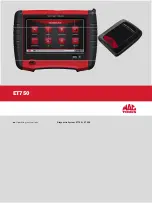
SDC2000
34 / 40
User Manual
Rev. 1.0 - 12/04/05
7. RDS Functions
7.1
Introduction
In all industries, there is an increasing need to monitor the operating parameters of
the different modules of a system in real time or to communicate with the different
management units.
Wireless communication systems are the ideal solution for various industries thanks
to such advantages as ease of installation and great flexibility.
Likewise, the radio broadcasting industry has witnessed an increasing need to send
various types of data packets together with the radio signal over the last few years;
besides improving the quality and reliability of existing services, this capability
supports the implementation of new services.
This need has been recognised at an international level and an ad-hoc work panel
has been set up to identify the different requirements and set a broadcast standard
suitable for the industry.
This is how the Radio Data System was established; RDS is now the most widely
used data transmission system in radio broadcast.
The SDC2000 enables transmission of a data stream in a mono or stereo radio
signal as specified in document "Specification of the radio data system (RDS)"
published by the European Committee for Electrotechnical Standardization
(CENELEC) Ref No. EN 50067.
7.2
Description of RDS
The Radio Data System standardises information transmission in mono/stereo
programmes in the VHF/MF band (87.5-108 MHz).
It meets standard requirements for the transmission of additional data in radio
programmes:
1) Compatibility with current mono/stereo broadcasts;
2) No interference with adjacent channels;
3) Compatibility with other identification systems already in use.
This system was chosen by an international work panel of experts and provides for
data to be transmitted at 1187.5 bit/sec with two-level phase modulation on 57 KHz
carrier and ± 2 KHz band.







































